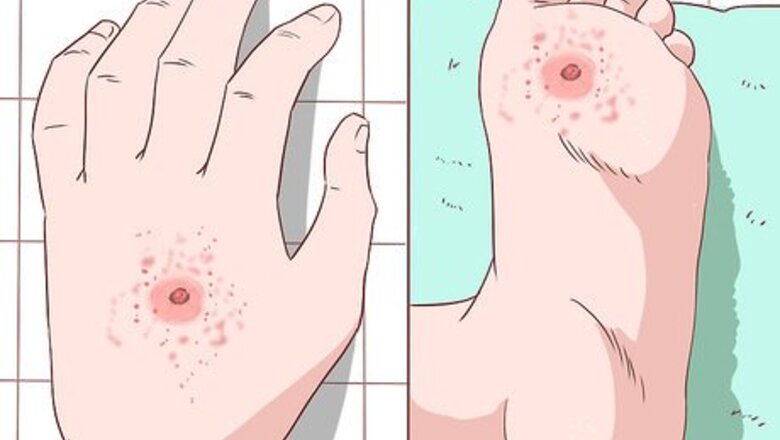
views
X
Expert Source
Miguel Cunha, DPMBoard Certified Podiatrist
Expert Interview. 22 April 2020.
Recognizing Primary Symptoms
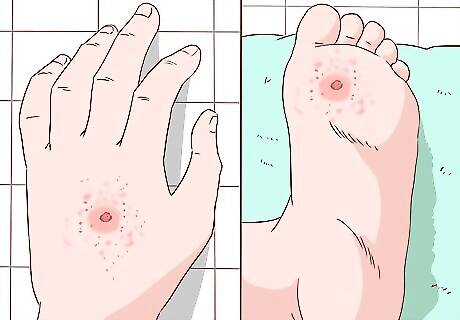
Look for irritation at the site of a small wound. Jungle rot makes its home in wounds you already received. Tropical ulcers generally occur in small wounds. Inflammation of the skin will begin soon after the wound is infected, starting small but increasing quickly in size. You’ll first notice a papule (lesion) that is raised slightly and brown, red, or pink in color. By the fifth or sixth day, a pustule about one centimeter in diameter will develop on the site of the initial wound. The affected skin might be reddened, itchy, and scaly. As the inflammation continues, part of the skin will progress from a rash that's itchy and scaly to dry and peeling.

Check for an ulcer. An ulcer is a serious sore or lesion accompanied by a breakdown of nearby tissue. On your feet or legs, the ulcer will cause severe tissue damage, bleeding, and possibly a grayish slough (a layer of dead tissue separated from the rest of your skin). The center of the ulcer might be yellow or red. It might be oval or round in shape. If you have jungle rot, your ulcer could be from half an inch to thirteen inches in diameter. Your ulcer's size will depend on your overall health and nutrition. The healthier you are, the less serious your ulcer will be. The ulcer will grow quickly during the first three weeks, then slow in growth until it reaches its maximum size after about six weeks.
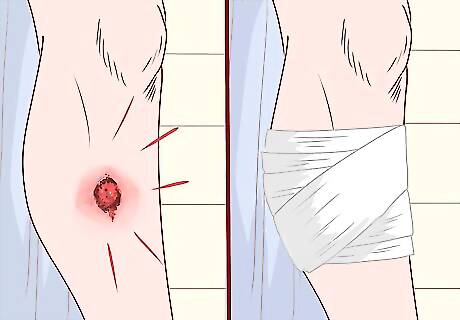
Recognize when you feel pain. The first two to three weeks of jungle rot are the most painful. Walking and standing might become nearly impossible due to the pain. In severe cases, there is marked disability where one is unable to walk. This may occur when the infection spreads to the tendon, sheath and the bones. You can relieve pain with adequate bandaging. Use a non-adhesive dressing and change it daily. Wash the wound with clean water between dressings and pat dry.
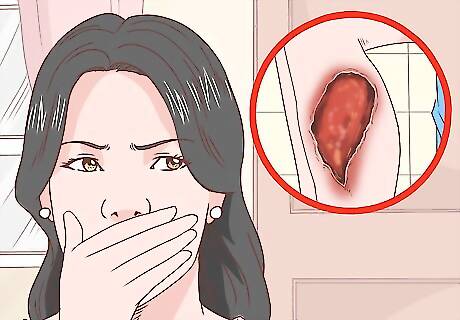
Check for a foul smell. When the pustules burst, they exude a stinky mixture of blood and pus. In the later stages of the disease, a foul smell might also indicate that your muscle tissues have begun to rot and die.
Checking for Secondary Symptoms
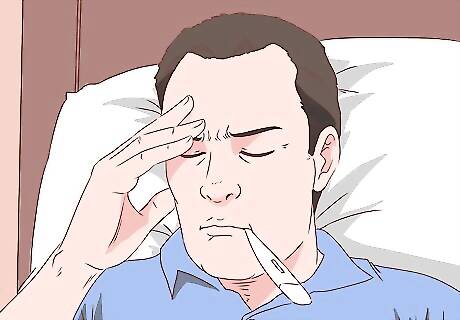
Look out for tetanus. Tetanus — also known as lockjaw — is a serious bacterial disease that affects the nervous system. Tetanus bacteria enters the body through a wound, so it is important to see your doctor for a tetanus booster shot if you haven’t had one in the past 10 years. Tetanus causes painful muscle contractions, especially in the jaw, and can affect your ability to breathe. Stay aware of signs that you might have tetanus, including: Difficulty swallowing Spasms that last several minutes Stiffness in the neck or jaw Fever High blood pressure
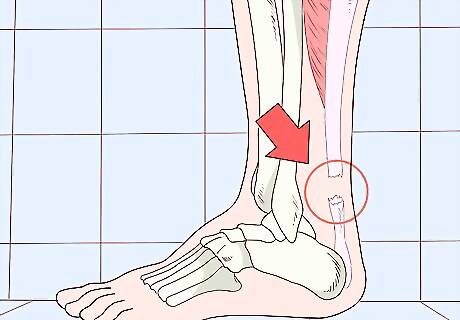
Check for ruptured tendons. The Achilles tendon — a tendon connecting your heel to the muscles in your calf — is often at special risk for rupture if you have jungle rot. Ruptured tendons can be identified by hearing or feeling a pop or snap in your calf followed quickly by a terrible pain in your leg or ankle. With a ruptured tendon, you will be unable to walk properly or put a normal amount of weight on the leg. Most cases of ruptured tendons require surgery. Talk to your doctor if you suspect you’ve ruptured a tendon.
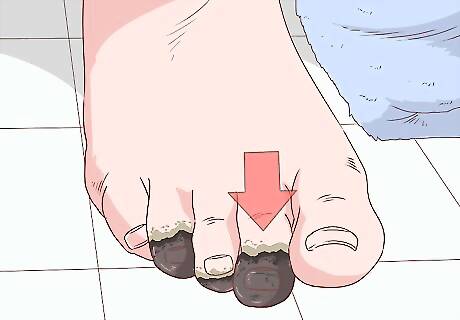
Look for gangrene. As the tropical ulcer progresses, it might lead to gangrene, a medical condition characterized by the death of tissue due to infection. If you suspect you have gangrene, contact a medical professional immediately for treatment. Your ulcer might have become gangrenous if: You have extreme pain in your affected limb followed by a period of numbness Your skin near the ulcer is deeply discolored and appears bruised. It might be red, purple, black, blue, or bronze in color. Your skin is pale, hard, numb, or cold. You have an extreme fever and/or low blood pressure in addition to any of the above symptoms.
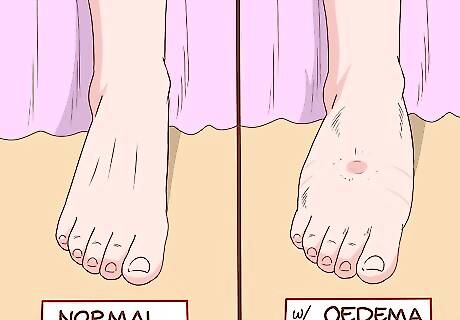
Look for edema. Edema is buildup of bodily fluid that causes the skin to swell and become discolored. If you notice yourself accumulating weight in your legs or feet, experiencing stiffness in your joints, or feeling aches and pains in your legs, you probably have edema. Combined with related symptoms, this may indicate a case of tropical ulcers.
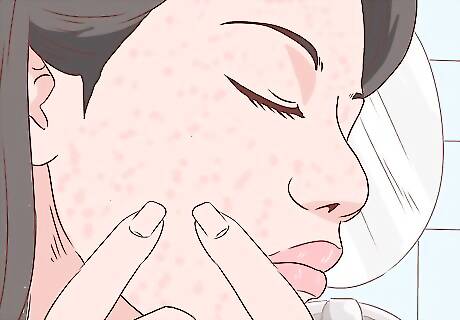
Look for hyperpigmentation. Hyperpigmentation is the darkening of skin in uneven patches. You might notice the skin around your ulcer becomes discolored and darker than the rest of the surrounding skin. This is usually temporary, but could last for several months. The amount of time the hyperpigmentation lasts varies from person to person.
Minimizing Risk Factors
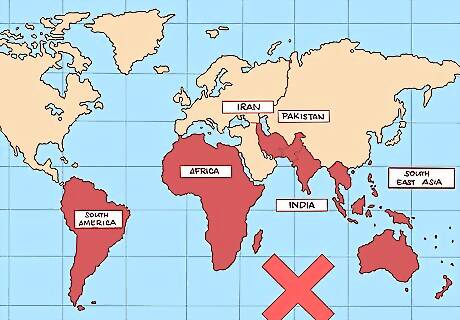
Use caution when traveling to tropical regions. As their name implies, tropical ulcers are found in the hot, tropical regions of the world. Most of Africa and South America host the bacterium that cause tropical ulcers, as does India, Pakistan, Iran, and Southeast Asia. When traveling to these areas, steer clear of forests and jungles, as well as marshes and swamps.
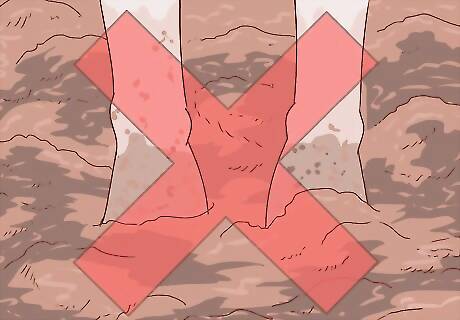
Stay out of mud and puddles. The bacteria that cause tropical ulcers thrive in dirty water. Do not step in mud and puddles. Instead, walk around them to avoid contact. If you do get mud splashed on you, wipe it off immediately. Those who live near the river or streams, farmers who work in rice paddies, and those who live in slum areas are at risk of developing tropical ulcers.
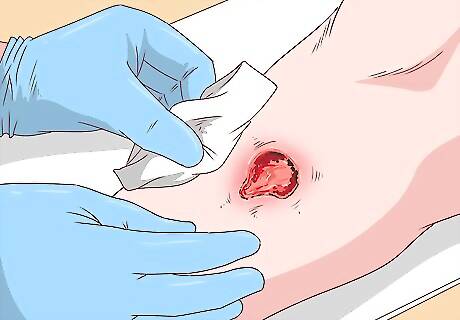
Treat wounds immediately. Exposing wounds to the elements can increase your risk for infection. Rinse the wound with clean water. Apply a topical antibiotic to the wound site and wrap it in clean bandages. For more serious wounds, consult a doctor. Take special care with injuries to the legs and feet, since 90% of all tropical ulcers develop below the knee. It is then best to keep the area clean and dry at all costs — especially in cases of burns.
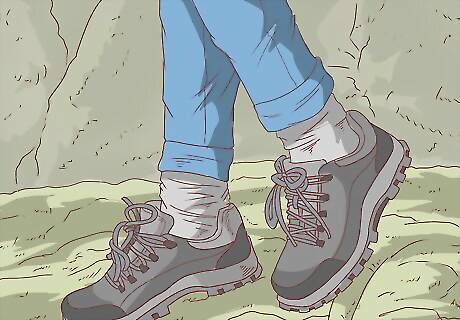
Protect your legs and feet. Walking barefoot puts you at higher risk for tropical ulcers, since the bacteria that cause it usually invade through wounds in your legs or feet. Plus, wearing adequate footwear decreases the chances that you’ll receive a wound that the jungle rot bacteria can enter. The bacteria that cause tropical ulcers can also spread from one person to another if the two individuals both walk about barefoot on a shared floor. Wear clean socks and well-fitting shoes. Additionally, wear pants that extend to the ankle. Avoid wearing shorts. Keep your feet dry. Do not walk in wet shoes for any significant distance. If your shoes get wet, remove them and allow them to dry. Do not share clothes or shoes with others.




















Comments
0 comment